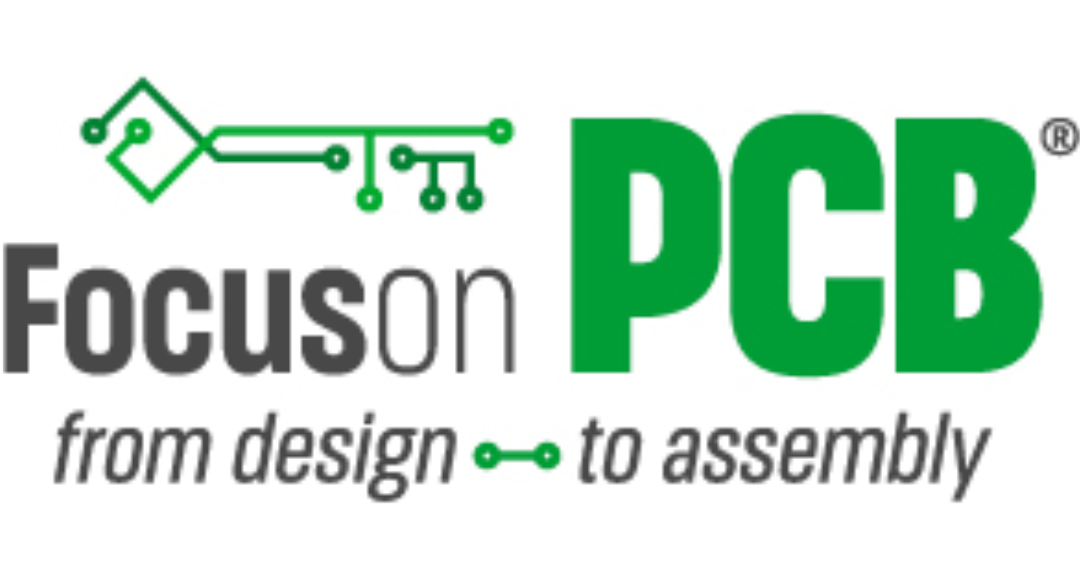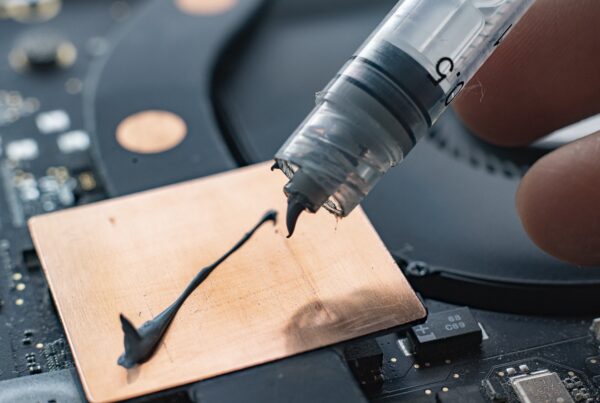
Key points of the article
- Cobwebbing manifests as web-like filaments during the spray application of conformal coating, compromising both the aesthetics and PCB performance.
- The main causes are related to premature polymerization of the coating due to factors such as excessive pressure, highly volatile solvents, and incorrect valve distance.
- To prevent cobwebbing, it is essential to properly adjust the atomization pressure, valve height, and coating formulation with the addition of thinners.
- The selection of solvents and parameters must comply with regulations such as REACH and RoHS and consider the company’s production and environmental objectives.
- Mascherpa provides technical support and targeted solutions such as DOWSIL conformal coatings to ensure optimal protection of printed circuit boards even in complex environments.
In the printed circuit board production process, conformal coating represents a crucial phase for protecting electronic boards from moisture, chemical agents, and environmental contamination. However, despite being the final step in the production cycle, it is also one of the most delicate and error-prone. One of the most frequent defects encountered is the formation of so-called cobwebs, a phenomenon also known as cobwebbing.
At Mascherpa, with years of experience in electronic protection and industrial solutions distribution, we address these types of issues daily with a technical approach focused on resolution. In this case, with the use of Dowsil PCB conformal coating,
What is Cobwebbing in Printed Circuit Boards?
The cobwebbing is a phenomenon that occurs during the spray application of PCB conformal coating. It appears as thin filaments, similar to cobwebs, that attach to the highest components of printed circuit boards. These filaments not only compromise the aesthetics of the printed circuit board but can also lead to functional problems or insulation defects.
This effect occurs when the conformal coating dries too quickly in the air, before reaching the surface of the electronic board, causing premature polymerization of the product. The issue is typical of atomized spraying and very rare with other application methods such as:
- Dip coating
- Brush application
- PCB encapsulation
Therefore, it is crucial to understand the underlying causes of cobwebbing to address it effectively.
The Main Causes of Cobweb Formation
When spraying a conformal coating on printed circuit boards, numerous technical factors come into play. The main causes of cobwebbing are:
- Insufficient or absent thinner: a formulation that is too “thick” of the conformal coating prevents uniform application and leads to premature drying.
- Highly volatile solvent: some solvents evaporate so quickly that they don’t allow the droplet to reach the printed circuit board surface.
- Excessive atomization pressure: generates fine atomization that accelerates polymerization in the air.
- Excessive valve distance from the substrate: the spray dries before reaching the printed circuit board.
These factors must be carefully evaluated to find the right balance between performance, quality, and productivity.

Solutions to Prevent Cobweb Formation in Printed Circuit Boards
To prevent cobweb formation when applying conformal coating to printed circuit boards, it is essential to pay attention to 3 particular processes that can make a significant difference during application:
-
- Reduce atomization pressure
- Adjust valve height
- Add a slower thinner or increase thinner quantity
Reduce Atomization Pressure
The first step to eliminate cobwebs is to adjust the air pressure used in the atomization process. Excessive pressure can effectively “cook” the solvent present in the mixture, promoting evaporation in the air and the formation of typical filaments.
It is recommended to start the configuration process by setting the atomization pressure to the lowest possible value. Only then, gradually increase it until achieving a uniform spray pattern. If cobwebbing occurs, the pressure is considered too high.
Adjust Valve Height
If cobwebs continue to appear even with low pressure, the problem might be the spray valve height relative to the PCB substrate.
When the valve is too far from the printed circuit board surface, the atomized particles of the coating evaporate partially or completely before contact, causing filament formation in the air.
It is necessary to program the spray head to adapt to the electronic board topography, following the contours and lowering over lower components. Each height variation must be studied in combination with pressure parameters to ensure smooth and uniform deposition.
Add a Slower Thinner or Increase Thinner Quantity
If the two previous adjustments are not sufficient, you can modify the conformal coating composition. The conformal coating must be sufficiently fluid to ensure continuous application and be defect-free, without drying too quickly.
The two main options are:
- Increase thinner quantity
- Replace the thinner with a slower-evaporating one
These measures slow down the drying process and prevent filament formation in the air.
Mascherpa offers a range of PCB conformal coating solvents designed to meet specific process requirements, including considerations for sustainability and regulatory compliance.
Focus on Safety and Regulations in Printed Circuit Boards
The adoption of different thinners or solvents must always consider regulatory constraints (such as REACH and RoHS) and production objectives (such as line speed). For example, aromatic solvents offer high performance but may be subject to increasingly stringent environmental restrictions.
FAQ
What are Printed Circuit Boards Used for?
Printed circuit boards serve to connect and provide electrical and mechanical support for electronic components through conductive tracks, enabling the operation of electrical and electronic devices.
What Materials are Used for Electronic Boards and Printed Circuits?
PCB circuit boards typically consist of an insulating substrate (such as FR-4 or fiberglass) and copper conductive layers; they can be covered with conformal coating for protection against moisture and contaminants.
What are Printed Circuit Boards Called?
They are commonly called PCB, which stands for Printed Circuit Board, or printed circuit boards.
What is Cobwebbing?
Cobwebbing is a defect that occurs during the spray application of conformal coating and consists of the formation of thin filaments similar to cobwebs caused by premature product drying.
Eliminating Cobwebbing for Perfect Protection of Printed Circuit Boards
The cobwebbing is one of the most common defects in PCB conformal coating processes, but also one of the easiest to resolve when you understand its causes. By properly adjusting pressure, valve height, and chemical composition of the conformal coating, optimal results can be achieved on any electronic PCB, even in complex production environments.
Thanks to our experience, we can provide specialized support for electronics and customized solutions for every type of printed circuit board, with a complete range of coatings.
Our expertise makes us a reference partner even at technical events such as Focus on PCB, where we shared our know-how, innovation, and concrete case studies. For more information about the solutions presented at the trade show or strategies to avoid problems with your printed circuit boards, contact our Mascherpa experts



